In this article I am going to look at the most comfortable studio headphones on the market today.
I will cover only headphones which experienced engineers and producers alike agree tick the boxes for comfort, quality, and value.
Read on for my choice of the 5 most comfortable studio headphones.

“Hi I’m Tom from Aeon Reviews.com and here we will be looking at the most comfortable studio headphones”
Best Studio Headphones For Comfort
Here we will take a look at some quality headphones and earphones which offer great comfort for the studio.
Menu
What Features To Look For
Open or Closed Back?
5 Most Comfortable Studio Headphones Reviewed
Conclusion
What Features To Look For…
There are a number of key features which will determine whether a headset is likely to be comfortable or not.
1/ Earpads
Key factors to consider with earpads are the amount of padding, the material, and the size.
Ideally you want the pads to feel soft and comfortable, but also breathable at the same time.
The longer the studio session you will use the headphones for, the better the ventilation you will need.
Material wise velour is an excellent choice of material for earpads. It is slightly textured for comfort but also more porous than say leather.
That’s not to say leather is a bad choice, you might find that real leather is a better option in terms of comfort than PU leather or similar.
Leather is a great choice for durability, but doesn’t quite match the comfort of velour.
Traditional studio headphones typically have ‘over-ear’ earpads. This type of earpad generally offers superior comfort compared to ‘on-ear’ ear pads due to the larger surface area.
2/ Headband
Factors to consider with the headband are not only the size and the amount of support, but also the amount of ‘give’ it has.
Ideally you want the headband to support the earpads to stay on your head, but not in a manner in which you feel the headphones are being clamped to your head.
Any numbness on the outer ear after use is an indication that the headphones are a poor fit, or have an overly rigid headband.
Having said this, most new headphones I’ve owned will have a ‘breaking in’ period where the headband will become more supple over time.
Few have been that comfortable out of the box.
So don’t be put off if your new studio headphones are a little clampy initially.
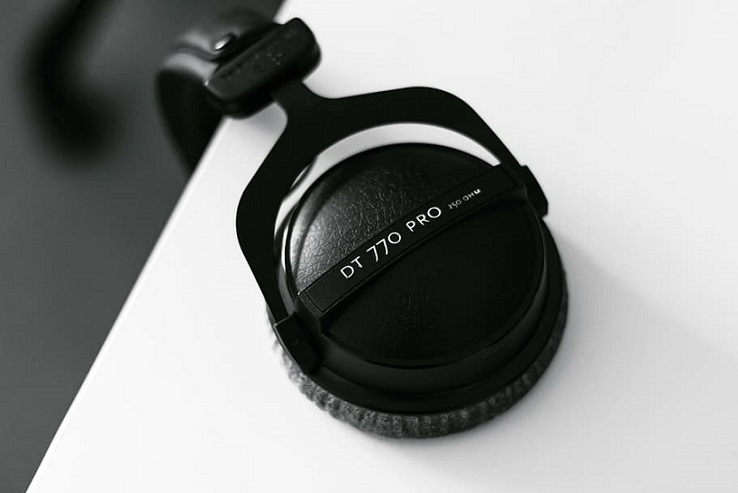
3/ Headphone Type (On-Ear & Over-Ear)
When choosing comfortable studio headphones you usually have to make the choice between over-ear or on-ear headphones.
The popular opinion is that over-ear usually wins in terms of comfort, and I would have to agree.
This is because the surface area of the pad is usually bigger, spreading the pressure of the ear pad over a wider area on and around your ear.
With on-ear, the ear pads are generally smaller, focussing the pressure of the pads on a smaller area of the ear.
Personal preference of course comes in to play here, and you may prefer a pair of more lightweight on-ear headphones.
4/ Weight
This is a no-brainer really. The lighter the headphones, the more comfortable they will be as you are not carrying a heavy weight on your head.
This will be a consideration if you are wearing the headphones for long studio session.
Don’t be so quick however to just buy the lightest headphones you can find, as this can sometimes be at the cost of reduced build quality.
On-ear headphones can be heavier than their over-ear counterparts, as the ear cups can sometimes be larger.
In this article we will look at headphones which strike a balance between comfort and weight.
Open Or Closed Back Studio Headphones?
Whether you go open or closed back depends on what you will be using the headphones for in the studio.
Typically in the studio you will be tracking or mixing and mastering.
Tracking – Listening whilst recording.
Mixing – The process of balancing out individual instruments. The mastering stage comes after this, where the focus is improving the quality of the recorded tracks.
Tracking Headphones
Vocals – There are two schools of thought on this one when it comes to open or closed back.
Many producers will use closed back headphones as this minimizes the chance of the backing track leaking from the headphones into the mic.
Closed back will also isolate you better from other instruments.
However closed back can cause the sound in the headphones to appear slightly more bassy or boomy.
Open back allow more air to flow through the ear cups, which allows for a more open and natural sound.
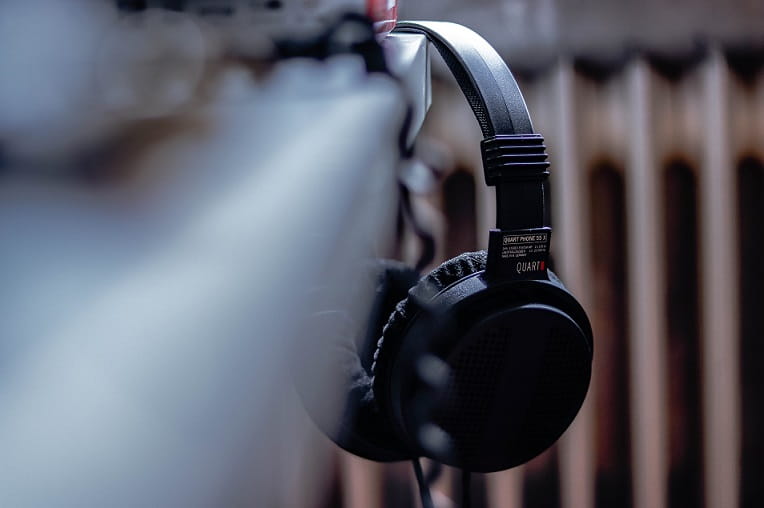
However this increases the chance of the track in the headphones leaking into the vocals.
There is no right or wrong answer, and the preference of the vocalist should also be considered.
As a compromise you may wish to look at a a pair of semi-open-back headphones, which can offer a balance of accuracy and isolation.
Semi-open back headphones offer less isolation than closed, and slightly more air than closed also.
Electric Guitar & Bass – Really, closed-back headphones, semi-open back headphones, or in some situations even no headphones are fine here.
It’s unlikely that open-back headphones will cause bleeding due to the loud levels coming from the amp. However you may want to use closed-back headphones for better isolation from the environment.
Acoustic Guitar – Closed-back headphones are a good choice here, as the proper isolation will ensure the headphones don’t bleed into the tracks you recorded.
Play it safe as you don’t want to get to the mixing stage and realise you have headphone bleed on the track you just recorded.
Drums – Isolation is key when it comes to drums.
You want headphones which will block out the sounds of the drums, allowing the drummer to hear the mix itself.
Also you don’t want any reference track itself bleeding into any microphones.
Look for a pair of tightly sealed closed-back headphones which can offer around 25-29dB of sound isolation.
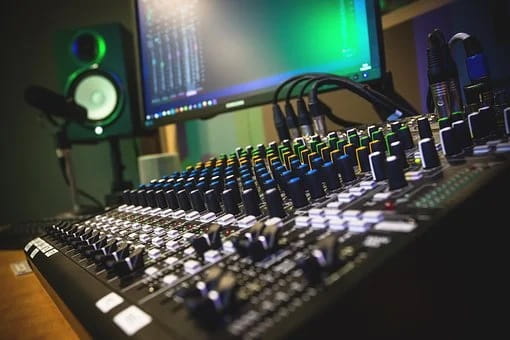
Mixing/Mastering Headphones
There is often debate over whether open or closed back headphones are better for mixing and mastering.
Again there is no right or wrong answer but there are some factors which may influence your decision.
As discussed, open-back headphones provide a more open and natural sound. However this will come at the cost of increased sound leakage from the headphones.
To this end, consider the environment in which you will be mixing and mastering.
For example, if you are mixing/mastering in a room with other people, they will be able to hear what you are listening to.
If you don’t want others to hear what you are listening to then closed back will be the better option.
Closed-back will also help you block out noise from the outside world.
Just bear in mind that large over-ear closed-back headphones can feel sweaty after prolonged use.
So this type of headphone may not be suitable for prolonged mixing and mastering sessions.
5 Most Comfortable Studio Headphones
1/ AKG K702 – Most Comfortable Open-Back Studio Headphones
2/ BeyerDynamic DT770 Pro – Most Comfortable Closed Back Studio Headphones
3/ Audio Technica ATH-E70 – Most Comfortable In Ear Studio Headphones
4/ AKG Pro Audio K240 – Most Comfortable Semi-Open Back Headphones
5/ Sennheiser HD660 S – Most Comfortable Mixing & Mastering Headphones
Affiliate Disclaimer – aeonreviews.com is a participant in the Amazon Services LLC Associates Program, an affiliate advertising program designed to provide a means for sites to earn advertising fees by advertising and linking to Amazon.com. We earn commissions for purchases made through links in this post.
1/ AKG K702 (Most Comfortable Open-Back Studio Headphones)
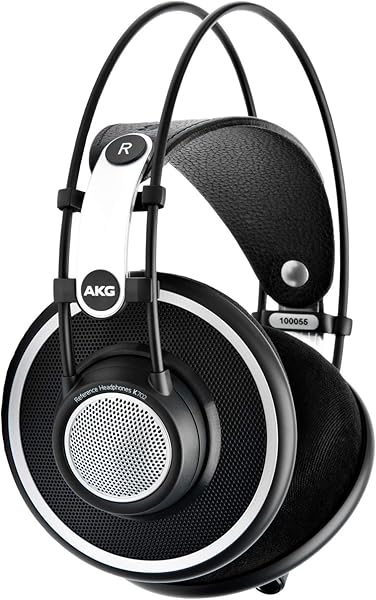
Pros
Comfortable Ear Pads
Self-Adjusting Headband
Flat-Wire Technology Cons
Slightly Lacking In Bass & Midrange
Comfortable Ear Pads
Self-Adjusting Headband
Flat-Wire Technology
Slightly Lacking In Bass & Midrange
Connection – Wired (3.5mm)
Item Weight – 235 Grams
Materials – Velour & 3D Foam Ear Pads, Leather Headband, Plastic Body
If you are looking for a reliable and comfortable pair of open-back headphones, then the AKG K702s are a great choice.
I picked these up a while back, not only based on their reputation for their great studio sound, but also as I’d heard nothing but positive things about how comfortable they were.
I am pleased to say I wasn’t disappointed as the K702 delivers above and beyond in both these areas.
Are The AKG K702 Headphones Comfortable?
The AKG K702s are one of the most comfortable sets of headphones I’ve tried to date.
This is down to two main features of the headphones, the ear pads and the headband.
The ear pads are made from 3D foam which feels comfortable against the ear, and the velour covering only adds to this comfort.
There is plenty of give in the ear pads, and they don’t feel like they are pressing on my ears at all.
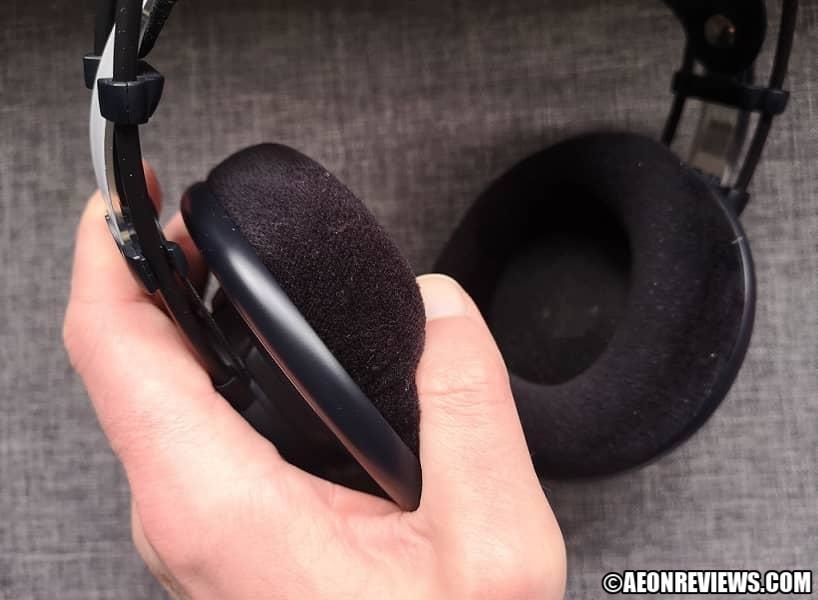
This is helped by the ergonomic padded leather headband which adjusts to any head shape.
As soon as the headband comes in touch with the top of your head it will automatically lengthen to accommodate the size and shape of your head.
The combination of comfortable ear pads and adjusting headband makes these headphones feel really light and comfortable on your head, regardless of the large ear pad size.
This makes the AKG K702 an ideal headphone for long recording sessions.
Sound
The K702s have a nice wide soundstage.
The revolutionary flat-wire technology provides a solid and punchy bass, with nice highs and above average midrange, also slightly less treble.
They have a flat response (meaning there is no artificial boosting of the bass or treble), which makes them ideal for the studio.
With the K702 you will hear exactly what is in your mix.
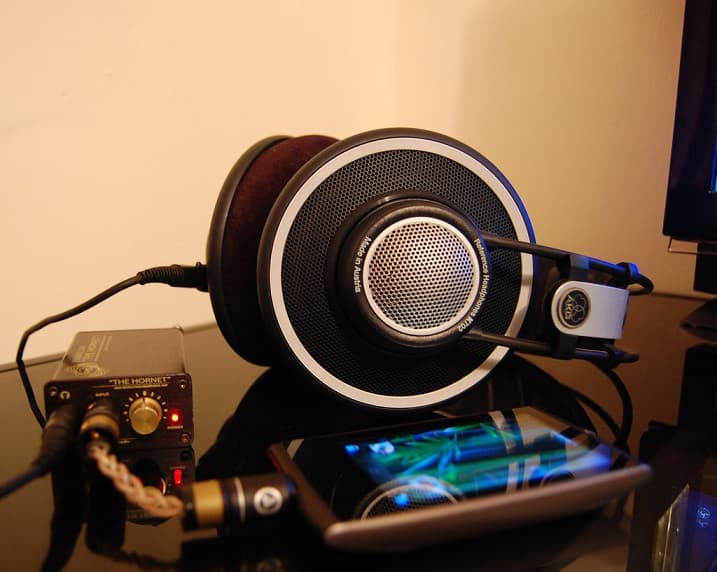
What Could Be Improved
No complaints from me in terms of their use for recording.
However if you wish to use these outside of the studio, for example for music, you may find you want something that delivers slightly more bass and midrange.
Alternative Product
If for some reason this offering from AKG isn’t what you’re looking then you may wish to consider the Beyerdynamic DT 880.
These offer a similar neutral and accurate sound as the K702s, however the 880s offer slightly more in the way of bass, but with less midrange.

The DT 880 feels more durable than the AKG K702, however it doesn’t adjust to your head in the same way.
Also the DT 880s may have the edge slightly if you are going to listen to music as well as record.
Final Opinion…
The AKG K702s are great studio headphones which really deliver in terms of comfort.
If you are looking strictly in terms of open-back studio headphones which are outstanding for recording applications, and also offer maximum comfort, then go for these.
However if you are going to listen to music also then consider the Beyerdynamic DT 880 instead.
Rest assured, if your recordings sound great through the K702’s, then you can almost guarantee they will sound great on anything!
These are my recommendation for comfortable open-back studio headphones which will be used purely for recording purposes.
2/ BeyerDynamic DT770 Pro (Most Comfortable Closed Back Studio Headphones)

Pros
Large Comfortable Velour Ear Pads
Great For Studio & Home
Durable Build Quality Cons
Can Take Time To Break In
Large Comfortable Velour Ear Pads
Great For Studio & Home
Durable Build Quality
Can Take Time To Break In
Connection – Wired (3.5mm)
Item Weight – 250 Grams
Materials – Velour & Foam Ear Pads, Metal & Leather Headband, Plastic Housing
Beyerdynamic have a history of producing outstanding studio headphones. And the DT770 Pro is no different.
Back when I was looking for a new pair of headphones for recording purposes, but which could also have other applications (such as listening to music), I noticed the 770 Pros were usually top of many audiophiles recommendations.
I can see why now as I consider myself another person who can highly recommend these headphones for studio and casual listening applications.
Are The DT770 Pro Headphones Comfortable?
Believe it or not I thought long and hard about actually including these headphones on the list in the first place.
I had heard good things about the comfort of these headphones. However when I finally purchased a pair they actually felt really clampy, and not particularly comfortable.
I regularly found that these would feel like they were pressing against the outer parts of my ear quite firmly, and causing heat to build up there.
After a couple of weeks though I can confirm that things did improve with regular use, and also a little bit of flexing of the headband before each use.
I am glad I took this time to break in the headphones properly, as it was honestly worth it, as I absolutely love the sound of these!
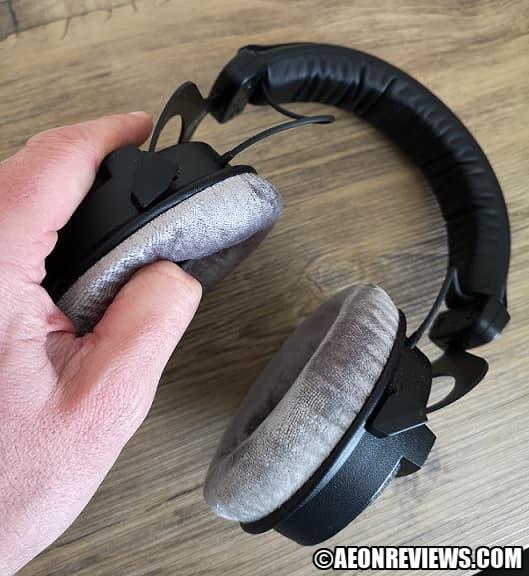
As with the AKG K702 these come with large round velour ear pads.
They sit nicely on the ears once broken in, but do clamp slightly more than the AKG ones. This is completely down to the headband design.
The Beyerdynamic DT770 Pro has a fixed metal headband, which although flexes, still defaults to a quite closed position.
I have had these for some time now and I am happy to report that they sit quite comfortably on my head now, and I can happily use them for up to an hour before my ears start to begin feeling too warm and I need a break.
So I would say the 770 Pros are comfortable for recording sessions up to this length. However if you think you will be wearing headphones for longer than this (1hr+), or are in a particularly warm environment or climate, then you may wish to look elsewhere.
Sound
Nice deep punchy bass here, with a crisp sound through the entire sound range.
I like that the bass is emphasized, but doesn’t drown out anything else in the mix such as vocals or instruments.
The DT770 Pros deliver smooth, clear sounding top end frequencies, with a somewhat subdued midrange.
You may notice that on some tracks the treble sounds somewhat boosted.
Be aware if using these for mixing, as you may end up with an over-emphasis on mids and any weak highs.

32, 80, or 250 Ohm?
These headphones are available in three variations in terms of Ohms, choose as follows.
32 Ohm – Only really suitable for smartphones, tablets and laptops.
80 Ohm – General studio use.
250 Ohm – Detailed mixing.
What Could Be Improved
Despite being closed back, there is some sound leakage here. However it is much less than many headphones of this type.
Alternative Product
Another great closed back headphone for studio use is the Sennheiser HD 280 PRO.
The ear pads are soft and comfortable, and don’t clamp as much out the box as the DT770s.
The bass is deep and clear, other frequencies are crisp, and they offer a flat response.

The sound profile overall isn’t as impressive for me as the DT770. And I would say the offering from Beyerdynamic slightly edges it in terms of build quality and comfort also.
However, for the money the HD 280 PROs are hard to beat.
Final Opinion…
Give the Beyerdynamic DT770 Pros a chance and you won’t be disappointed.
They don’t quite offer the comfort of the AKG K702, and there can be a lengthy breaking in period with these before they start to feel really comfortable.
But once you settle into these you will be rewarded with a really outstanding pair of closed back studio headphones.
And not only are they great in the studio environment, but they can also be used for music and gaming applications as well.
3/ Audio Technica ATH-E70 (Most Comfortable In-Ear Studio Headphones)
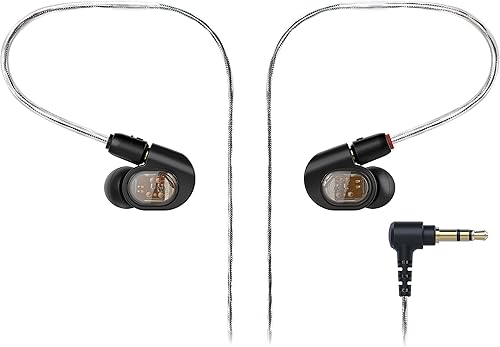
Pros
Moulds Perfectly To Your Ear
Warm & Detailed Sound
Two Types Of Ear Tip Included As Standard Cons
Price
Moulds Perfectly To Your Ear
Warm & Detailed Sound
Two Types Of Ear Tip Included As Standard
Price
Connection – Wired (3.5mm)
Item Weight – 9 g (0.3 oz) without cable
Materials – Silicone & Foam Ear Tips, Gold-Plated Mini-Plug
With in-ear headphones becoming more and more commonplace in the studio, it was only right that we included a pair of comfortable in-ear studio headphones.
My pick are the awesome Audio Technica ATH-E70 professional in-ear studio monitor headphones.
Read on to find out why.
Are The Audio Technica ATH-E70 Headphones Comfortable?
There are two main features on the Audio Technica ATH-E70s that guarantee comfort. The ear tips, and the cable loops.
One thing I liked here, which is something you don’t often see, is the inclusion of two types of ear tips as standard (silicone and foam types).
Secondly, the memory cable loops will loop over your ear and sit just how you want them.
A combination of these features means you will quite happily wear the ATH-E70 in-ear headphones for long periods in the studio.
These headphones really do make ear fatigue a thing of the past.
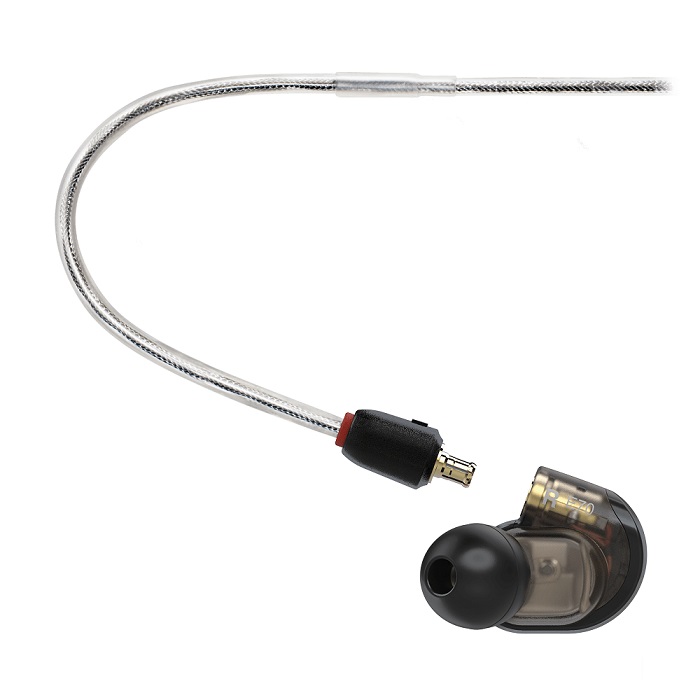
Sound
The bass is slightly boosted on these. Not overemphasised, but they do have a noticeable kick.
A warm and clear midrange is present, with the ATH-E70s handling vocals particularly well.
A nice wide sounds stage overall, with instruments distinguishable from each other.
I would describe the high end as relaxed and warm.
The three onboard armature drivers provide accuracy across the entire frequency range.
Overall the ATH-E70 makes it easy to achieve a reliable and balanced sound every time.
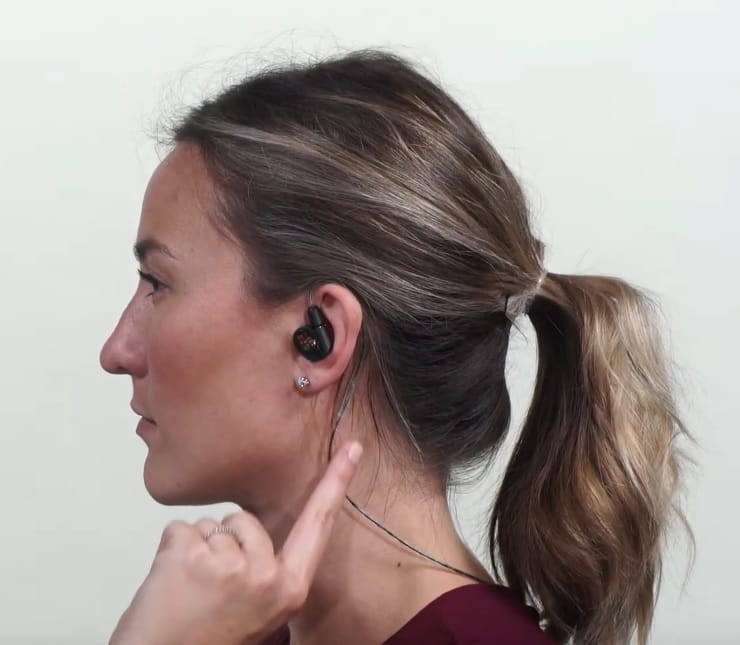
What Could Be Improved
Be aware that this level of quality comes at a cost, and these headphones are at the higher end of the in-ear studio headphones in terms of price.
You could look at the E40 and E50 as cheaper equivalents. However few users report them as being nearly as comfortable as the E70.
Alternative Product
As an alternative, the Mackie MP-240 comes in at almost half the price of the ATH-E70, but still offers great sound, comfort, and durability.
Clarity of sound is what the MP-240 do really well, which makes them great for studio use.

Combined with excellent sound isolation, you will have no problem hearing what you are playing.
Definitely worth considering if you want a cheaper alternative to the E70.
Final Opinion…
A really great pair of in-ear headphones, which make ear fatigue a thing of the past.
You can expect comfort, a sound which is clear and well balanced, with solid isolation and build quality.
The Audio Technica ATH-E70 headphones are reliable for production, monitoring, and I can see these even performing well for stage use.
4/ AKG Pro Audio K240 (Most Comfortable Semi-Open Back Headphones)

Pros
Easily Adapts To Your Head
Great Sound For Studio Monitoring
Price Cons
Not Great For Mixing & Mastering
Easily Adapts To Your Head
Great Sound For Studio Monitoring
Price
Not Great For Mixing & Mastering
Connection – Wired (3.5mm) & 1/4” Adapter
Item Weight – 240 Grams
Materials – Simulated Leather & Foam Ear Pads, Simulated Leather Headband, Plastic Housing
If you are looking for a quality pair of semi-open back headphones for the studio, then AKG have got you covered.
For many years the AKG Pro Audio K240 has been recommended by many artists, producers, and engineers.
In fact you will find that these headphones are the standard in many recording settings.
Audio quality, comfort, and a great price make the K240s hard to pass up when choosing comfortable studio headphones.
Are The AKG Pro Audio K240 Headphones Comfortable?
Firstly the K240 are over ear headphones, so they are more comfortable than say a pair of on ear equivalents.
This is ensured through the soft, simulated leather ear pads with foam padding.
The K240 has the flexible headband design seen amongst many AKG headphones, which enables it to adapt to different head shapes easily.
This greatly reduces the amount of clamp you will feel on your ears.
The headband is also flexible enough to allow for single ear use.
Many users report being able to use the K240 for hours on end without any kind of ear fatigue.
And weighing in at 240g, these are light enough to not put too much of a strain on your head as a whole.

Sound
There is a clear frequency response here. Also the clarity is great for the price that you are paying, making them great for monitoring vocals.
The K240 uses XXL transducers to provide more detail to the mids and highs.
You can expect solid bass here but nothing more, and there are certainly more bass heavy headphones out there.
The K240 offer an open soundstage with good acoustics thanks to the semi-open design.
There is a flat response, making them ideal for studio use.
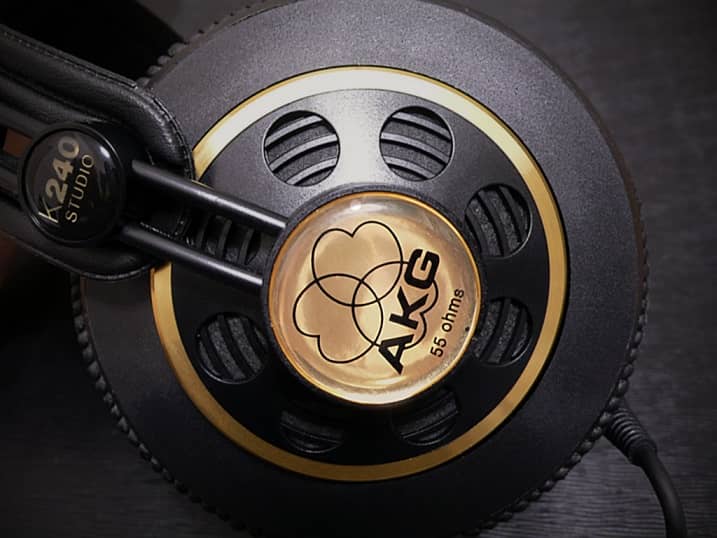
What Could Be Improved
The K240 is not really a headphone which is recommended for mixing or mastering as there are much better headphones out there for this.
I would only really use these for monitoring what you are recording.
As these are semi-open back headphones, there will be some sound leakage into the surrounding environment.
You will also get reduced isolation as a result.
Increased bass may be a desire for some, but many will find the bass levels here to be sufficient.
Alternative Product
The K240s are great value, but if you are on a really tight budget then check out the Superlux HD668B Dynamic Semi-Open Headphones.
The headband has optimized mechanical pressure which provides long-wearing comfort.

The included pleather ear pads will comfortable enough for many, however do yourself a favour and pick up a pair of after-market velour or similar ones for maximum comfort.
The sound stage in big, open, and impressive for the price. You can also expect a balanced bass response, with the midrange being great for music.
Final Opinion…
It’s hard to find headphones with this level of sound quality and clarity at this price point.
The AKG Pro Audio K240 have a great track record when it comes to reliability with some enthusiasts reporting having had them for many years.
Great for extended use when monitoring, with many users reporting being able to use these for hours at a time.
5/ Sennheiser HD660 S (Most Comfortable Mixing & Mastering Headphones)

Pros
Contours To Your Ear Shape
Audiophile Grade Quality
Natural, Balanced & Neutral Sound Cons
Snug Fit To Start With
Contours To Your Ear Shape
Audiophile Grade Quality
Natural, Balanced & Neutral Sound
Snug Fit To Start With
Connection – Wired 6.35mm & 4.4mm Stereo Plug (with 6.35mm to 3.5mm adaptor)
Item Weight – 259 Grams
Materials – Velour & Foam Ear Pads, Foam Headband, Plastic Housing
Sennheiser is one of the most respected companies in the world when it comes to audio.
And the Sennheiser 600 series of headphones have been symbols of quality in the audiophile world for well over ten years now.
The Sennheiser HD600 and HD650 were renowned as being the most accurate and neutral headphones in their class.
The HD660 S now carries on this tradition…but what are they like in terms of comfort and performance in the studio?
Are The Sennheiser HD660 S Comfortable?
The elliptical shaped ear pads are designed to follow the anatomy of the ear, and angled just right to sit around your ears nicely.
These are open-back headphones, so your ears will not heat up as quick as closed-back ones.
The ear pads themselves feel great, due to being nice and soft on the ears, and also velour covered.

Also the headband comes with thick padding, so these will feel comfortable on your ears and head.
Finally these are predominantly plastic, making them feel lightweight (around 250g) and thus further contributing to the comfort.
The above features make these ideal for long mixing and mastering sessions, and you will likely forget you are wearing these after a while!
Sound
In its class, the Sennheiser HD660 S offers arguably the best balanced and natural sound.
The detail of the sound is impressive and noticeably spacious.
The HD660 S is a fully open headphone, so you get a nice wide and deep sound stage, with a natural sense of air and spaciousness.
Despite being open back the HD660 S offers one of the most neutral sounds you will find in studio headphones.
The bass is somewhat shallow compared to other competitors, particularly the DT 1990 Pro. However the bass is solid, snappy, and crisp overall.
You can expect an outstanding midrange performance here, with a particularly smooth upper midrange.
The treble is pleasantly natural and not harsh at all.
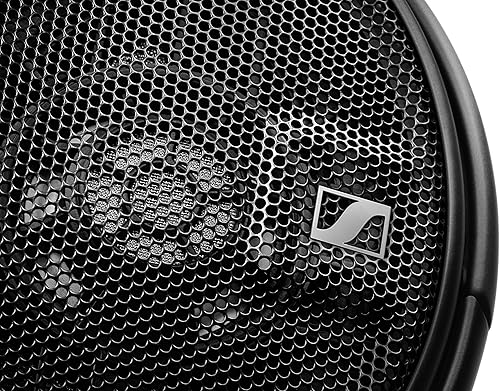
What Could Be Improved
Depending on the shape of your head, you may find these headphones feel a little tight initially.
However this is normal and you can expect these to break in in no time and become super comfortable.
Finally, as the HD660 S are pretty much the apex in terms of sound and comfort for studio use, this comes at a relatively high price tag.
Alternative Product
As an alternative, the DT 1990 Pros provide excellent build quality, and comfort thanks to the memory foam ear pads.
They are slightly heavier than the HD660 S, and you can also expect a longer breaking in period before they get truly comfortable (although like the DT770 Pros they are super comfortable once broken in).

The 1990 Pros have the advantage of coming with two ear pad variants.
One version offers a neutral frequency, ideal for mixing and mastering. And a second which offers a more bass boosted experience, ideal for tracking.
Sound wise you can expect clear and detailed highs, an accurate midrange, and a wide and deep soundstage.
Final Opinion…
Some may argue that the DT 1990 Pro has a more detailed sound. However if your needs lie in comfort, then the 660 S are the more comfortable of the two for me.
Really these are the quickest, most accurate, and the most neutral of the Sennheiser 600 series.
When it comes to audio quality and comfort for mixing and mastering sessions, these are a must-have.
Conclusion
Hopefully you found this article on the most comfortable studio headphones useful.
Although comfort is somewhat subjective, myself and many other users report the above headphones as being excellent in terms of comfort in the studio.
Have in mind what you will be using the headphones for when you are in the studio (tracking/mixing/mastering), and most importantly, allow a good breaking in period to allow these headphones to become really comfortable.
Check out aeonreviews.com for more articles like this.

